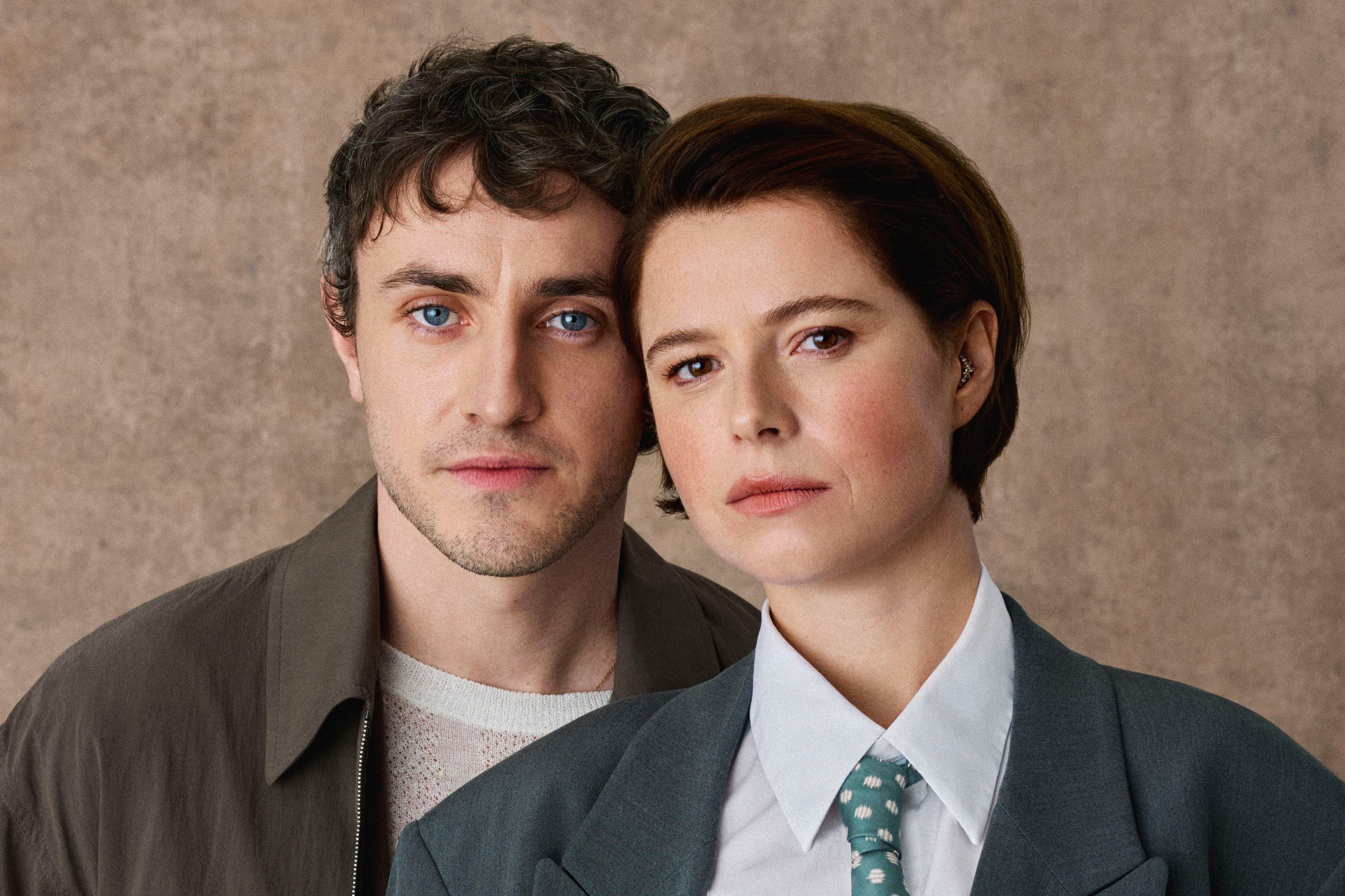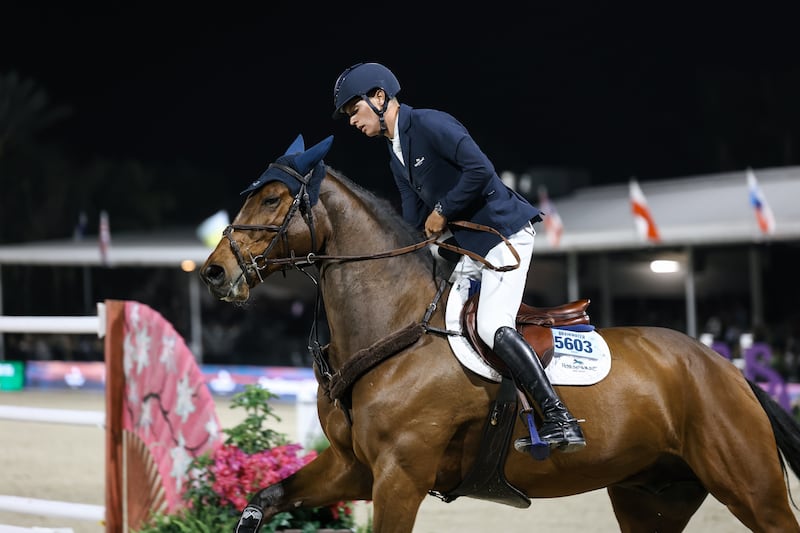Kevin Shortall surveys the grounds of St Aidan’s Community School in west Tallaght, Co Dublin.
The wind whips through the metal perimeter fence, across the expanse of grassland, past the 1980s concrete school building and over the deserted playing fields.
“These 15 acres are largely useless to us,” Shortall, the school principal, says. “We don’t play on the pitches. Maybe when it’s very dry, but they’re in bits. They’re undulating, waterlogged and there are potholes.”
The school has a proud sporting history – soccer star Robbie Keane is one of its past pupils – but it doesn’t play home football matches any more due to the state of the pitch.
READ MORE
“The difference is middle-class and private schools will fundraise, there will be quiz nights. Their parents are in a position to contribute, to pay voluntary contributions and they’ll have their all-weather pitch and everything,” he says.
He worries aloud about whether complaining about underfunding could bring negativity on the school, but Shortall is fiercely ambitious for his students.
“I think our school is the finest school in the country. I really do,” he says. “But it could be even better if we evened out the money and gave our students access to the things other schools have.”
Late September: a jump in enrolments
School enrolments are officially recorded at the end of September. There’s good news: numbers at St Aidan’s are up. When Shortall took over in January 2022, there were 371 students in a school built for 1,000. It climbed to 484 students in the 2023/24 school year. This year it is up to 561.
The increase is influenced by a number of factors.
The school is running a transition year (TY) for the first time in 25 years. It means there are 30 extra students.
TY was phased out at a time when there was concern that it was contributing to early school dropout rates. These days, the vast majority of students complete the Leaving Certificate.
Shortall is delighted, but apprehensive. Other schools with greater resources can bring their students on skiing trips to the Alps or cultural tours to Rome.
“How do we compete?” he says. “How do we make sure we give our students the same experiences that they’re going to get in another school?”
St Aidan’s is categorised as a “Deis band one” school, the highest level of disadvantage there is. While it receives additional State funding, Shortall says making ends meets is a daily struggle due to the level of student need, high running costs of a “spectacularly” heat-inefficient school and limited fundraising capacity.
For all the challenges locally, he says, much is changing in the community. A recent report shows the proportion of residents in the area with third-level qualifications has climbed from 6 per cent in 2001 to 35 per cent in 2024.
“There’s been so much progress, but there’s a huge way to go,” he says.
While student numbers are also climbing on the back of good news about the school and wider population growth, another factor is St Aidan’s proximity to asylum-seeker accommodation at Dublin’s Citywest Hotel.
Some newly arrived students start within days of arriving in Ireland. In all, about 170 students at the school are from asylum-seeking or migrant backgrounds where English is not their first language.
“It has been a net positive, a huge positive to the school, ” he says. “It’s added such diversity ... It has enriched the school.”
October: ‘A happy staff, a happy school’
Shortall moves at quick clip across the school building, with a mug of tea in hand. There’s a word of encouragement or a joke for almost every pupil or staff member he comes across.
When he took over as principal four years ago, Shortall says, he had two maxims.
“One was a happy staff; and two was to make school a happy place,” he says.
There are colourful certificates – “Kevin and Úna’s [Úna Moloney - deputy principal] certificates” – dispensed each week to students or staff who have made a special contribution.
Shortall grew up in the Kilnamanagh area of Tallaght, taught in St Aidan’s as a young teacher and was deputy principal of Old Bawn Community School in Tallaght. His return to St Aidan’s was a proud moment.
“This is home,” he says. “I’ve spent my life around here.”
Some teaching staff are former pupils and feel a strong connection to the school, such as 27-year-old Seán Quinn.
He completed his Leaving Cert at the school a decade ago and has returned to St Aidan’s as a PE teacher. What is his main memory of his time at school as a pupil?
“Warmth,” he says, immediately. “It was always a very safe place for me to come.”
Quinn says he was allowed to express himself through what he was best at: sport.
“I was involved in every team – football, basketball, Gaelic ... I didn’t know about Gaelic before coming here. I would have thought it for a rich family, you know? It was out of touch for me,” he says.
“But, for me, that was essential to doing well academically.”
He was the first in his family to go to university.
“That’s because of this place. You don’t always see that college as being in your path when you’re from these kinds of areas.”
November: ‘St Aidan’s is not full’
The general election is in full swing and politicians’ signs and posters are everywhere.
A poster for a candidate from the Irish Freedom Party is attached to a lamp-post, close to the school entrance. It reads: “Ireland is full.”
[ ‘Ireland is full’: How a far-right phrase went mainstreamOpens in new window ]
A few days later, a handwritten poster appears underneath, with jaunty colours and multicoloured handprints.
“St Aidan’s is NOT full. Everyone is welcome here.”
It turns out to have been created by some of the students. It ends up creating a stir on social media. Most posts applaud the pupils, but it also attracts negative commentary from right-wing accounts.

February: money worries
Shortall’s biggest worries are money-related. In the depths of midwinter, giant energy bills can arrive like stealth bombs. Then there are the constant maintenance issues such as leaks and condensation, which result in resin oozing out of the walls.
“It keeps you awake at night, because you want to do the things that students deserve,” he says. “You’re looking at the accounts the whole time. You budget, but then the basketball team gets through to the final and it’s €1,500 for a bus. Are we going to say you’re not going to the final?”
There is controversy in the media over wasteful public spending on various projects, which rankles with him.
“I don’t think you should be frugal with young people. Be frugal with the bike shed in Leinster House, but not with children.”
March: preparations for the ‘Bob Marley’ school’s anniversary
For the 40th anniversary of the school, Shortall unearths a copy of Plan – “Ireland’s Architectural Magazine” from 1984.
The cover story is on the brand new 16-classroom school building at St Aidan’s. It goes on to describe how the “colour scheme of greens and yellows was selected to reflect the rural character of the area and to provide brightness and lightness to the school”.

“It won architectural awards. It was lovely,” he says.
But this was 1980s Dublin, with soaring unemployment locally. Easy access to the site and out-of-sight alcoves meant it soon became a target for antisocial behaviour.
“In the early days, rather than putting fences up, they put cages on the windows,” Shortall recalls. “The school at the time was yellow and green. The cages rusted and went red, so they used to call it the Bob Marley school: green, yellow and red.”
Vandalism, he says, is largely gone now and the area has changed.
“This community has matured so much. And the school has grown to be something that the community really values,” Shortall says. “There is a huge positive disposition towards the school, so very few would want to damage it.”
April: new horizons
The first group of transition-year students have set off on a four-day trip to Barcelona thanks to sponsorship and fundraising.
There are a few hiccups – such as getting last-minute international travel passes for asylum-seeking students – but it goes smoothly. For some, it is their first time on an aeroplane.
“It’s about giving people new experiences, broadening their horizons – it’s lovely,” Shortall says. “We spend 13 years making people miserable, so why not give them a treat. Get them to enjoy their schooling.”
Early May: ‘They just pulled like dogs’
Students from St Aidan’s rowing squad stride into the school as All-Ireland school champions with gold medals dangling from their necks.
There is a raucous guard of honour from the students to greet them.
“They just pulled like dogs,” Shortall says. “Like, we were up against schools with serious pedigree. There’s no water here, but we have this raw talent, all this untapped energy. They’re just raring to go and as good as gold.”
We learn together, we teach together, we grow together, we succeed together, we heal together, we help together, we laugh together and we win together @staidanscs.bsky.social.
— Kevin Shortall (@kevinshortall.bsky.social) May 8, 2025 at 7:56 PM
[image or embed]
Two years ago, one of the PE teachers secured access to rowing machines for a six-week period. They were a hit, especially among students with attention deficit hyperactivity disorder (ADHD).
“Our top rower would have a diagnosis and loves swinging her bag around in circles out in the yard ... she took to rowing more than anyone,” deputy principal Úna Moloney says.
“Now she’s got gold medals and is tutoring the younger students ... we’re really proud of them all. They’ve knocked it out of the water.”

It has been a year of impressive achievements: the school has also won two national school basketball competitions, while the transition year has won awards for promoting college awareness.
Later, in his office, Shortall wonders aloud whether he needs to set sights for his students even higher.
“You know what I’m thinking? Maybe I’ve also needed to change my mindset about working here. The fact that I’m so delighted that we’re winning these things, I’m beginning to say to myself, ‘I didn’t have enough faith in the school’.
“Every time something like this happens, I pinch myself. I go, ’No – this school is incredible. And the young people are incredible. They can do anything they want’.”
Late May: ‘We are all so proud of you’
It’s the end of term. Staff, students and visitors are gathered in the sports hall to mark the 40th anniversary of St Aidan’s.
Sandisiwe Khupe, a 17-year-old in fifth year, has been chosen to give a speech to pupils, parents and visitors.
A month previously she was crowned winner of a national girls’ public speaking competition run by Soroptimist International.
Sandisiwe stands on the stage, with a banner in the background – “Congratulations – we are all so proud of you” – and speaks confidently and fluently to the audience of pupils, teachers, past pupils and local politicians.
“I came from South Africa and Zimbabwe and, I’ll be honest, it was scary at first,” she says.
“New country, new school, new life. But, from the moment I entered St Aidan’s, something shifted: I wasn’t just welcomed; I was embraced ... St Aidan’s didn’t ask me to change who I was; it gave me the space to become even more of who I’m meant to be. That’s not just my story, it’s our story ...”
The impact of a single school on a child and the wider community, she says, is “something sacred”.
“Forty years, four decades of shaping minds, building futures and creating a culture where no one is left behind. That’s not just a milestone; that’s a masterpiece,” she says to cheers and applause.
She rushes offstage and is embraced by her friends. One student wipes her eyes with her sleeve. Shortall beams with pride as he looks out on the crowd.
“Isn’t she magic?” he says. “Just watch this space.”





















